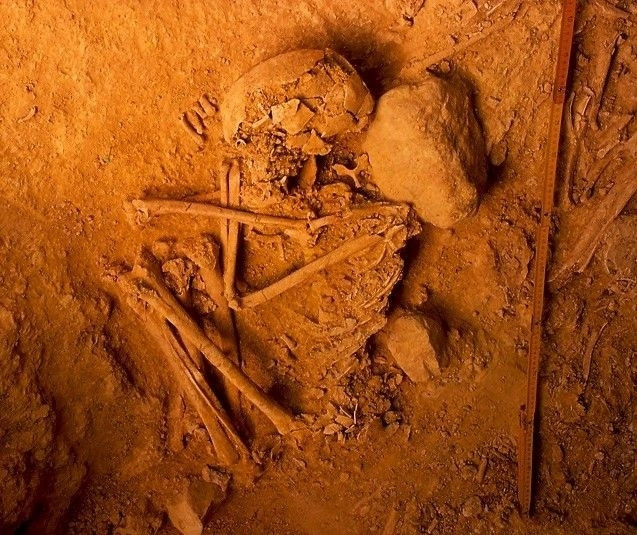Ancient Iberians resisted Steppe invasions better than the rest of Europe 6,000 years ago
Steppe migrations played a minor role in shaping the Iberian population and culture, ancient DNA suggests.

People who lived in the Iberian Peninsula between 6,200 and 3,400 years ago received less genetic input from Steppe invaders than the inhabitants of neighbouring countries, a study has shown. Steppe migrations thus appear to have played a more minor role in shaping the Iberian population and culture.
Recent analyses of ancient DNA have revealed a lot about the ancestry of Europeans. They have shown that these people coming from the steppes of Eurasia had a significant genetic impact on the people of Central and Northern Europe during the transition from Neolithic times to the Bronze Age, as they mixed with them.
These migrations from the Steppe regions probably amounted to invasions, as evidence of violence from that time have been recovered, and steppe people gradually imposed their Indo-European language, which suggests there was an element of cultural domination to their spread throughout Europe.
The impact of Steppe invaders on the Iberian Peninsula (comprising modern-day Spain and Portugal) however, is less clear. Archaeological evidence has hinted that the Iberian populations went through a cultural shift at the time, with changes in their material culture and funerary rites. There was for instance an evolution from large megalithic structures where many people were buried to more individualised grave with precious objects.
However, scientists did not know what role Steppe migrations played in this shift. "Given that Steppe people from Eurasia have dramatically contributed to the genome of people in central and northern Europe, our question was what role these Steppe migrations played in Iberia? In our study, we find that Steppe migrations played a much smaller role in the genetic makeup and culture of Iberian people than in that of other Europeans," study author Rui Martiniano of Trinity College Dublin, told IBTimes UK.
To reach these conclusions, the researchers analysed genomic data from 14 ancient individuals from Portugal, distributed from the Middle Neolithic (4200–3500 BCE) to the Middle Bronze Age (1740–1430 BCE).
They compared the genomic data to other ancient and modern genomes. In contrast with other European regions, they identified only subtle genetic changes between the Portuguese Neolithic and Bronze Age samples. These changes would have resulted from small-scale migration.
This likely had implications for the spread of language, culture and technology in the Iberian peninsula. It may explain why languages with no links to the Indo-European languages from the Steppe remained in Iberia. It may even explain why Spain today still harbours a pre-Indo-European language, called Euskera, spoken in the Basque region.
The analyses, published in the journal PLOS Genetics, were made possible thanks to the great progresses in DNA sequencing techniques over the last decade, which make it possible to extract ancient DNA from bones more easily and to ensure it does not become too contaminated.
It's still unclear why Iberian people would have been less impacted by Steppe invasions than the rest of Europe. Some scholars have hypothesised that their unique geographical position at the southern edge of Europe might have protected them but this theory does not hold when you consider the fact that Steppe people managed to reach the islands of northern Europe – which are arguably more isolated geographically.
© Copyright IBTimes 2025. All rights reserved.






















